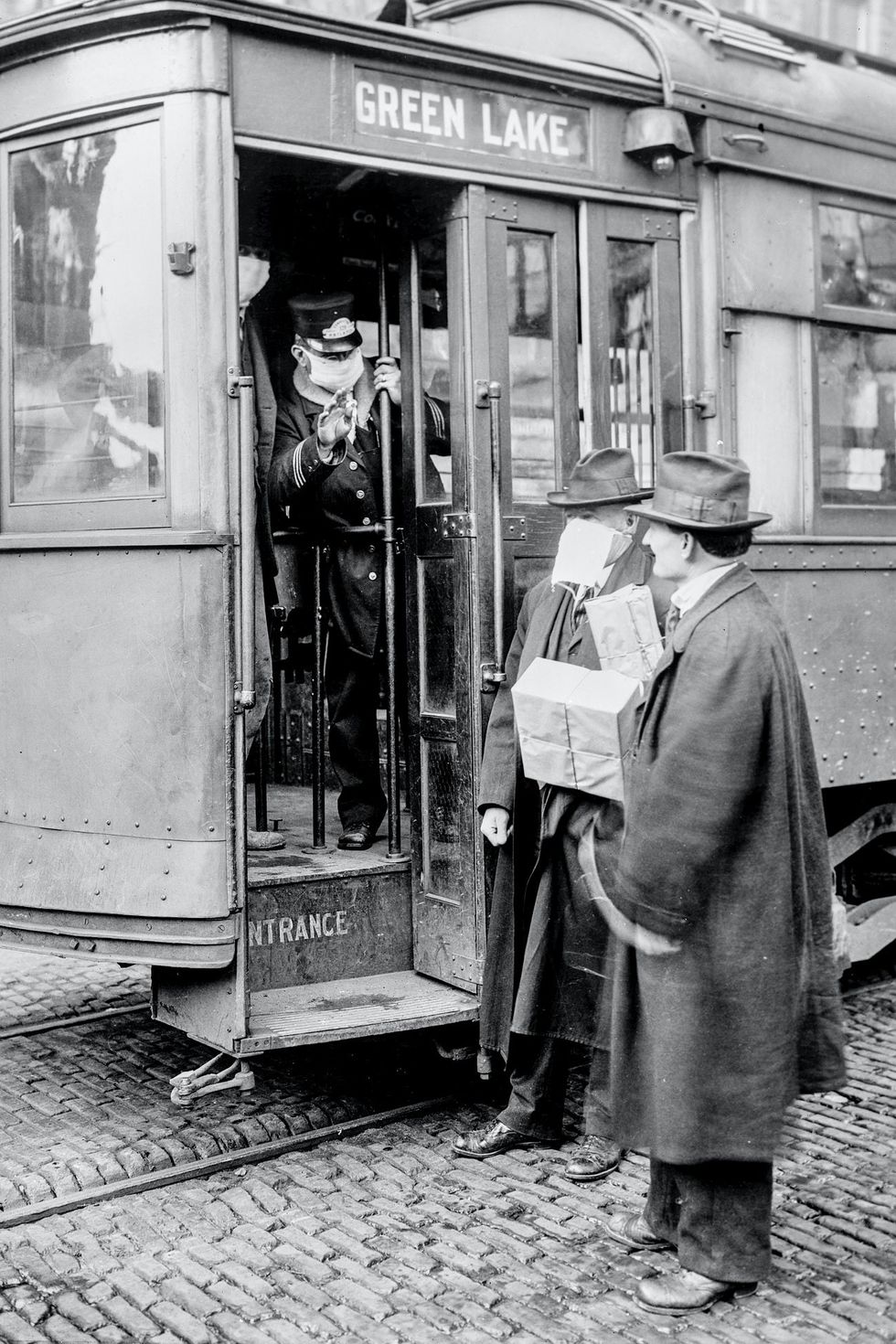
Precaution during the Spanish Influenza Epidemic would not permit anyone to ride on the street cars without wearing a mask, including those pictured above in this image from Seattle, Wash. (ca.1918), according to the Library of Congress. Original image from Library of Congress; Digitally enhanced by rawpixel
reporter's notebook







 Penguin Random House
Penguin Random House
 A needlework example.Cynthia Hochswender
A needlework example.Cynthia Hochswender Alexandra Peters, left, is exhibiting needlework samplers from her collection at the Litchfield Historical Society Museum.Cynthia Hochswender
Alexandra Peters, left, is exhibiting needlework samplers from her collection at the Litchfield Historical Society Museum.Cynthia Hochswender




